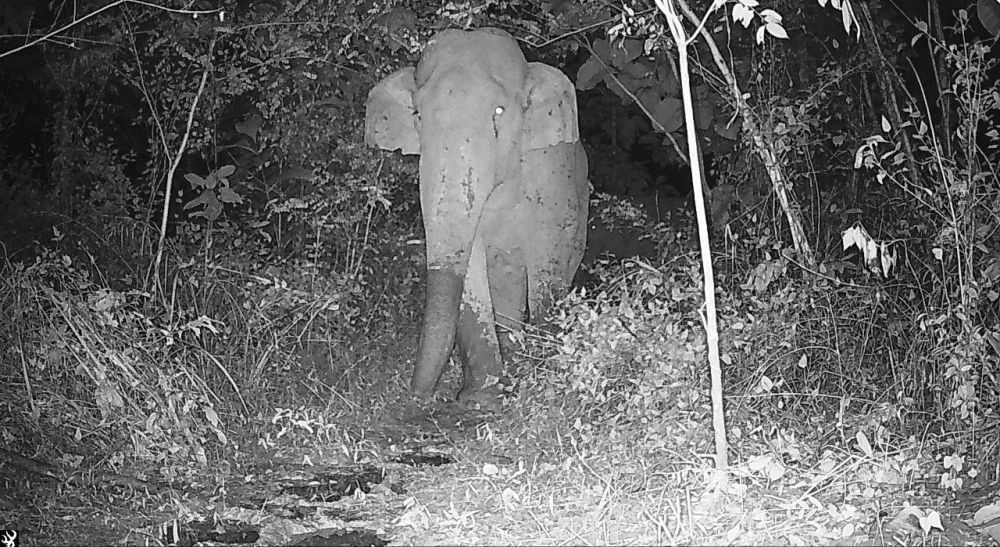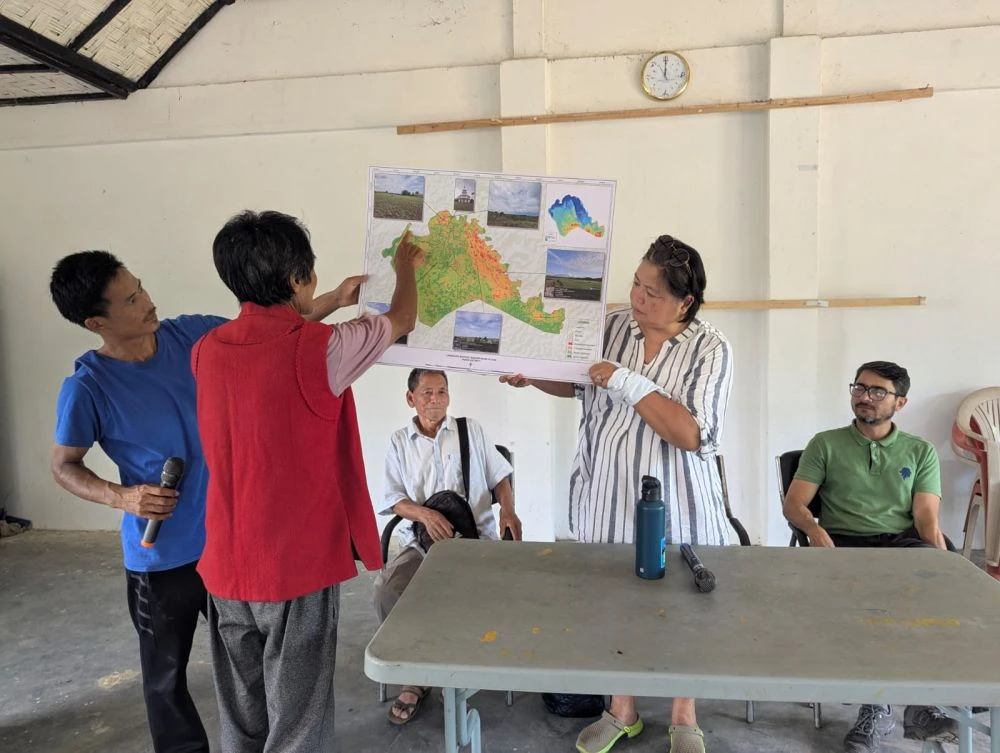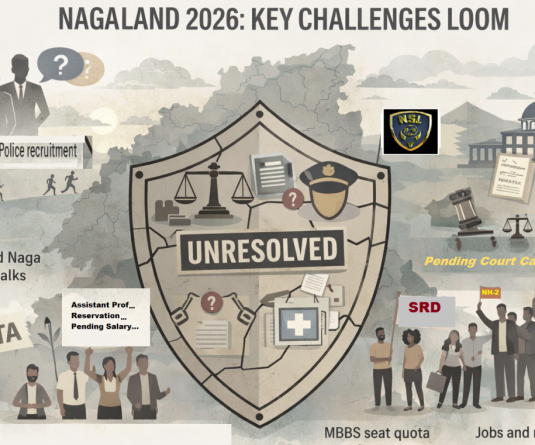A wild elephant captured through a camera trap installed by WCS-India, as part of efforts to monitor movement along the elephant corridor near Beisumpuikam village. (Photo Courtesy: WCS-I)

Morung Express News
Beisumpuikam/Manglamukh | August 7
In a move to address the long-standing human-elephant conflict affecting border villages of Nagaland and Assam, Anti-Depredation Squads (ADS) have been formed in Beisumpuikam under Peren sub-division and Manglamukh under Dhansiripar sub-division through the intervention of the Wildlife Conservation Society–India (WCS-I).
For decades, farmers of Beisumpuikam and Manglamukh-two adjoining villages located on the fringes of Ntangki National Park have been grappling with persistent elephant raids, as herds enter their fields and plantations from neighbouring Assam. With paddy fields and plantations destroyed year after year, the conflict has left villagers helpless and exposed.
The elephants are believed to be migrating through age-old traditional routes—widely known as elephant corridors-from Daldoli Reserve Forest, Diphu, and Khatkhati areas in Assam. Increasing human habitation in these once-forested regions has pushed the elephants deeper into bordering areas of Nagaland, where they now regularly encroach into farmlands.
Significantly, while the two villages lie close to each other and face similar problems, they have never before taken collective action to address the shared challenge. That is now changing. With the formation of the ADS teams and intervention by WCS-I, Beisumpuikam and Manglamukh have resolved to work together, share information and help one another during times of elephant encroachment and distress. This community-based collaboration, stakeholders believe, will strengthen early warning systems and improve response effectiveness.

Speaking during a small handover programme of equipment to the newly formed ADS teams, Bano Haralu, Project Lead of the Nagaland Rights and Communities Team at WCS-I, highlighted the significance of the intervention.
“For decades altogether, the farmers in Manglamukh and Beisumpuikam villages on the fringes of the Ntangki National Park have helplessly watched elephants raid their standing paddy and crops. Therefore, the creation of the Anti-Depredation Squads under the ITHCP/IUCN Phase II Grant gains significance in that it is the first time that the two adjoining villages are taking on a common malady in decades,” she stated.
Nine members from Beisumpuikam and six members from Manglamukh form the core of the respective ADS teams. The squads are tasked with monitoring elephant movements, alerting villagers of approaching herds, coordinating with forest department officials, and driving elephants back using safe and non-lethal deterrents. They will also maintain records of elephant raids, damage assessments, and areas of frequent conflict—crucial data for evolving long-term response strategies.
Hand-held torches, jungle boots, raincoats and streetlights were among the equipment distributed to support the squads in their patrols.
Haralu emphasised the importance of coordination among ADS members to ensure effectiveness, while acknowledging that there is no “100 percent solution” to elephant conflict anywhere in the world.
“The option is to lessen the conflict. The main goal is to reduce conflict, save lives and ensure no lives are lost. Therefore, a pre-warning system is very important. But the information must be credible as misinformation can lead to unnecessary fear and chaos,” she cautioned.
She further underscored the need for proper record-keeping of when, where and how incidents happen, along with detailed reports on crop and property damage to facilitate compensation claims from the government.
Reports from the villagers suggest that incidents of elephant encroachments have increased in recent years.
“Our fields and plantations have become their fields,” lamented Tati, Chairman of the Beisumpuikam Village Council. “They have come here because there is no jungle or trees in Assam, and now they are not leaving.”
He said that this year alone, elephants have completely destroyed 10 to 12 puras of crops.
“We understand that it is not only our land but there’s too. If we are to talk about elephants, we can’t defeat them-no one can. But we hope that with the WCS-I initiative, it can save lives in the villages,” he added.
Beisumpuikam’s GB, Sinlak, reported that a herd of about 12 elephants which arrived earlier this year has refused to leave. “They eat young plants like black sesame seeds at night and retreat into the forested area during the day,” he said. He estimated that at least 20 farmers’ fields and plantations have been affected so far.
In Manglamukh, elephants tend to enter the village first before moving into nearby Daniel and Hazadisa villages, making Manglamukh a de facto buffer zone.
“The elephants come to our fields and plantations, and once they’re done, they move on to Daniel and Hazadisa,” explained Sushila Haflongvar, a WCS volunteer. “If we manage to drive them away from Manglamukh, the other villages are safe.”
Sodish, a farmer from Manglamukh, reported that two elephants entered his land in June. “So far, none have come again, but with the paddy planting season already started, it’s also the time when elephants tend to return. We are on alert,” he said.
Despite the challenges, the formation of the ADS has given villagers a sense of direction and support. And for the first time, there is an attempt at cross-village cooperation-not just in strategy but also in solidarity.
“The most important thing,” Haralu added, “is that communities are no longer waiting for someone else to act. They are coming together, thinking collectively and doing something about it.”






